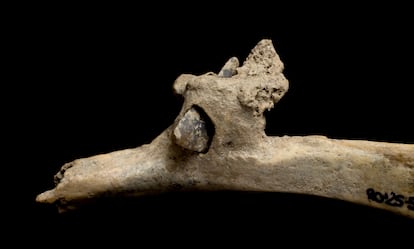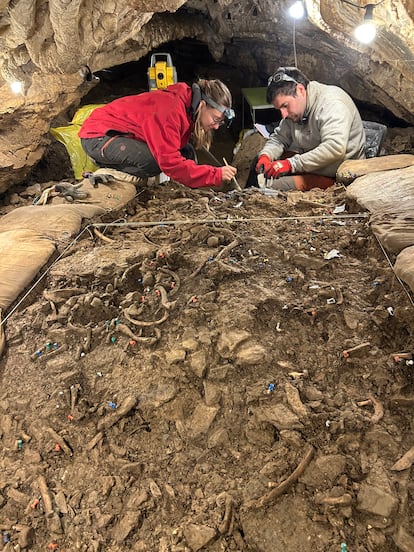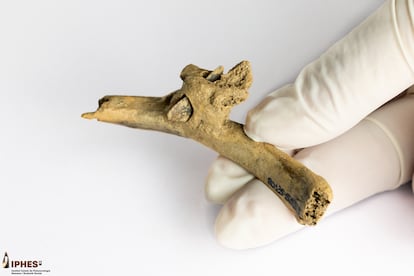An arrow embedded in a human rib dating back more than 4,000 years has been discovered in the Pyrenees: "It entered through the back."


Researchers from the Catalan Institute of Human Paleoecology and Social Evolution ( IPHES-CERCA ) have found an arrow embedded in a human rib dating back more than 4,000 years in a prehistoric tomb in the Pyrenees, in the municipality of Queralbs (Girona). This discovery took place during the latest excavation campaign at this high mountain site, where a team from IPHES-CERCA has been working since 2019, under the direction of Professor of Prehistory at the Autonomous University of Barcelona (UAB) and IPHES-CERCA researcher Carlos Tornero, the institution explained in a statement on Tuesday.
The team emphasized that this prehistoric tomb at Roc de les Orenetes, at an altitude of over 1,800 meters, preserves "direct and exceptional evidence of interpersonal conflict among the earliest shepherd communities in the Pyrenees." They also emphasized that this new milestone "consolidates the site as a benchmark" for the study of recent prehistory in southern Europe and opens new avenues for research into violence, conflict, and resilience in ancient human communities.

The arrow, fired from behind and still embedded in the bone, also shows signs of bone regeneration, indicating that the individual survived for some time after the impact, according to the researchers.
A mountain communityArchaeologists have explained that the Roc de les Orenetes, discovered in the 1960s by a local resident, is a cavity that 4,000 years ago and for at least two centuries housed the remains of more than 60 individuals who probably belonged to a single community.
From the analysis of remains collected in recent years, a study led by Miguel Ángel Moreno, a professor of osteoarchaeology at the University of Edinburgh (Scotland), has concluded that this was a population composed mostly of adult men, but also of women and children. This osteological study—of the bones—points to a community "well adapted to the demands of the Pyrenean environment."
Thus, robust skeletons, marked muscle insertions, and signs of intense physical activity stand out. "All of this suggests a demanding lifestyle, linked to grazing and the exploitation of high-altitude resources. The ties between individuals and with the territory were close, as demonstrated by the choice of the cave as a burial site for generations," they noted.
Evidence of violent confrontationsThe first studies, published in 2024, had already identified "anomalies" in some skeletons, such as cut marks related to the use of axes and daggers, and intentional bone fractures, evidence consistent with violent confrontations.

While it was unknown whether the recovered arrows had been used to injure humans, this point has now been clarified with the new discovery, they emphasized. “It leaves no room for doubt. The rib fragment has an embedded arrowhead, identical to others from the site, which entered the individual's back,” Moreno explained.
"The trajectory indicates that the shot was fired from behind. The tip became embedded, and the bone began to regenerate around it. Now we can study the force of the impact, the type of weapon used, and the position of the attacker and the victim," he added. Another surprising point for researcher Carlos Tornero is that, judging by the wound, the individual did not die immediately.
"Considering the position and trajectory of the arrow, it could have killed the person at two points: either at the moment of impact, due to bleeding or lung damage (for example, a pneumothorax), or shortly afterward, due to infection (...) This type of detail will now be addressed with the detailed studies we are going to conduct," he said.
The fragment is currently being analyzed by X-ray microtomography at the National Center for Research on Human Evolution (CENIEH) in Burgos and will subsequently be analyzed at the chemical, genomic, and proteomic levels in specialized centers in Barcelona and the United States.
EL PAÍS





